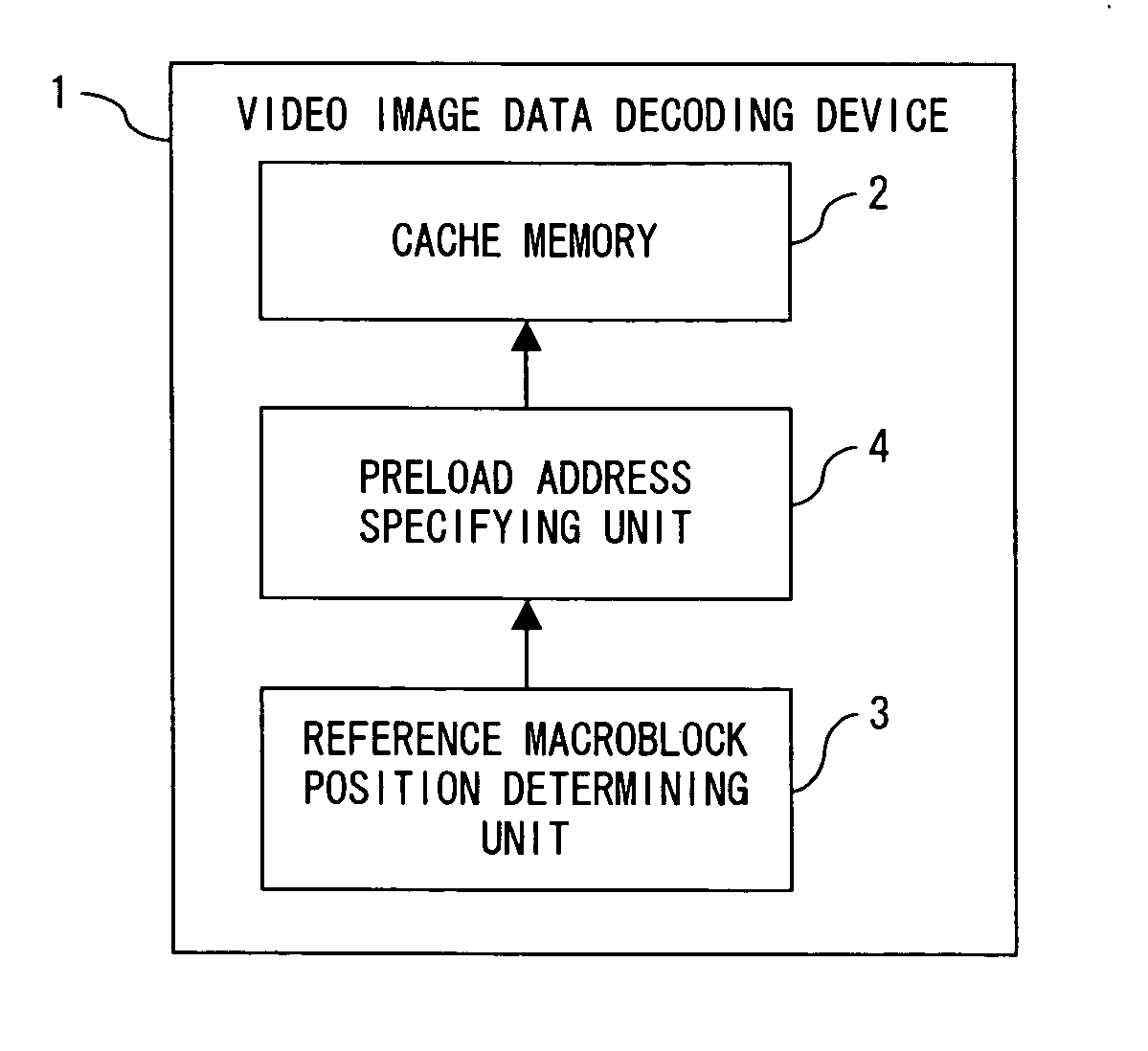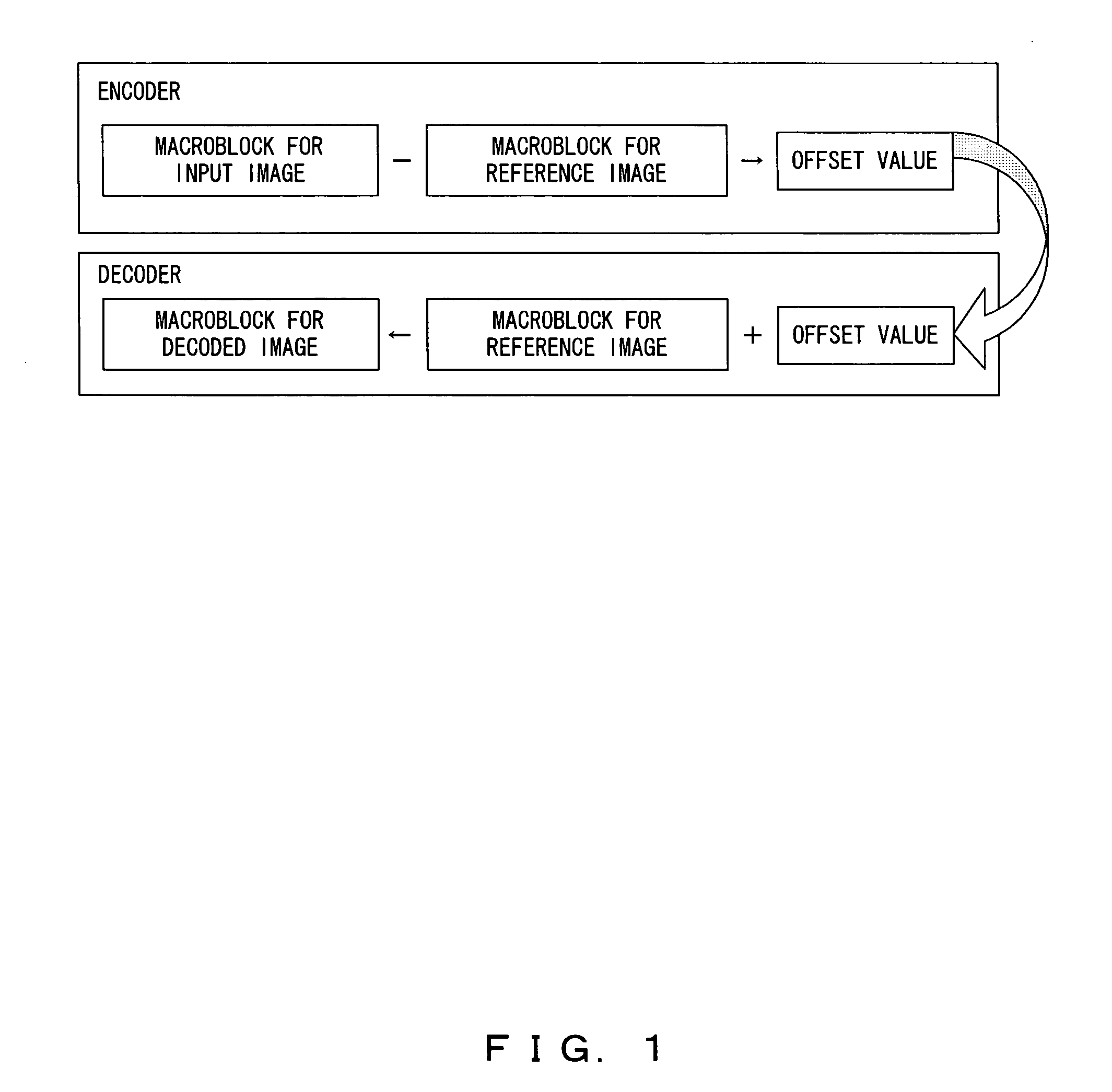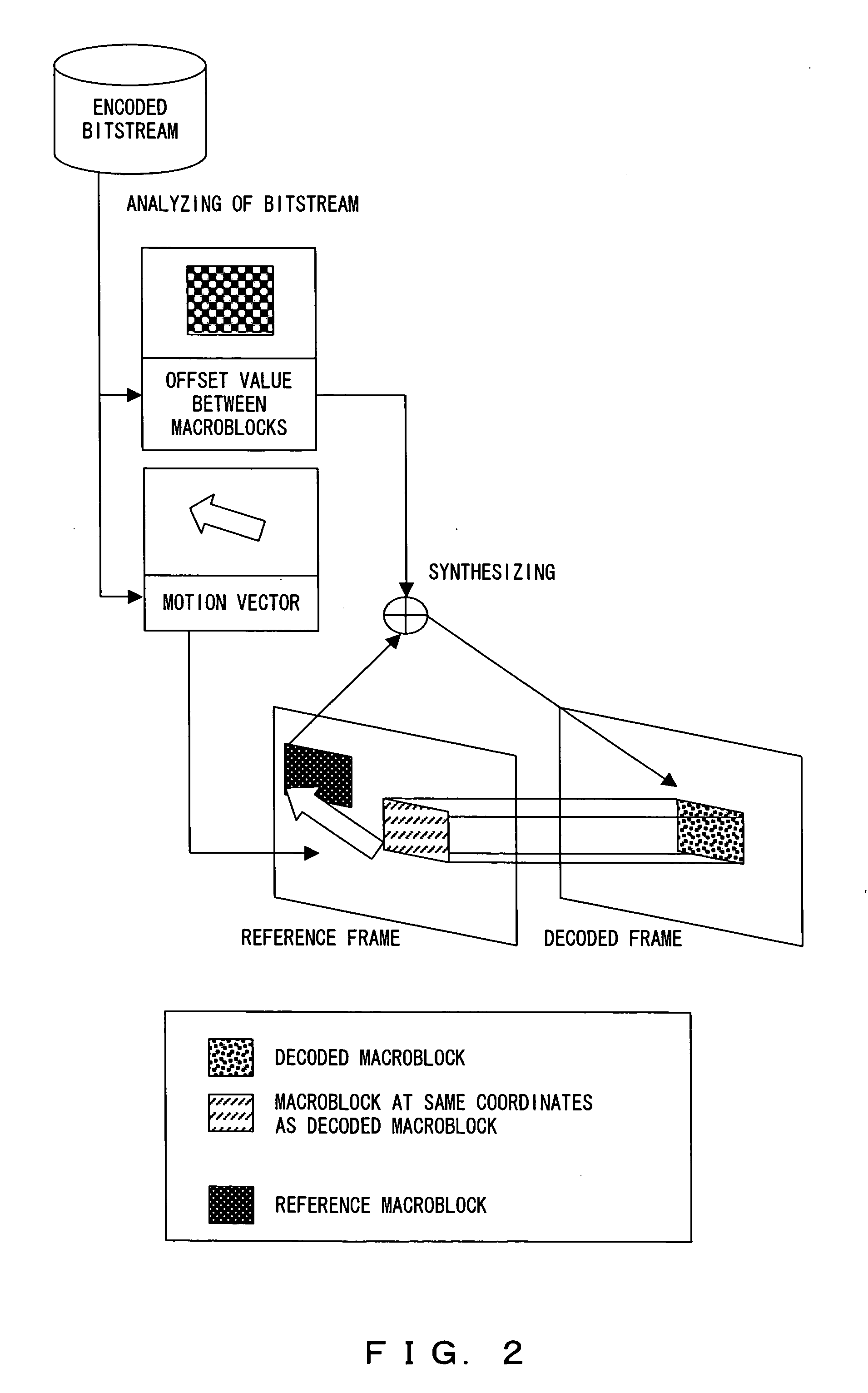Decoding device and decoding program for video image data
a video image and decoding technology, applied in the field of compressing video images, can solve the problems of reducing memory access performance, increasing the size of cache memory, and requiring a great deal of calculations in the decoding process of video images, so as to reduce the occurrence rate of cache misses and improve memory access performan
- Summary
- Abstract
- Description
- Claims
- Application Information
AI Technical Summary
Benefits of technology
Problems solved by technology
Method used
Image
Examples
Embodiment Construction
[0042]FIG. 6 is a block diagram showing a principle configuration of a video image data decoding device of the present invention. In FIG. 6, a decoding device 1 employs a motion compensation technique and comprises a cache memory 2, a reference macroblock position determining unit 3 and a preload address specifying unit 4.
[0043] The cache memory 2 temporally stores video image data. The reference macroblock position determining unit 3 determines a position of a reference macroblock on a reference frame corresponding to a macroblock to be decoded. The preload address specifying unit 4 determines whether or not a reference macroblock includes a cacheline boundary when data of the reference macroblock is not stored in the cache memory 2, and specifies a position of the cacheline boundary as a front address for the data preload from a memory storing the data of the reference macroblock when the reference macroblock includes the cacheline boundary.
[0044] The video image data decoding d...
PUM
 Login to View More
Login to View More Abstract
Description
Claims
Application Information
 Login to View More
Login to View More - R&D
- Intellectual Property
- Life Sciences
- Materials
- Tech Scout
- Unparalleled Data Quality
- Higher Quality Content
- 60% Fewer Hallucinations
Browse by: Latest US Patents, China's latest patents, Technical Efficacy Thesaurus, Application Domain, Technology Topic, Popular Technical Reports.
© 2025 PatSnap. All rights reserved.Legal|Privacy policy|Modern Slavery Act Transparency Statement|Sitemap|About US| Contact US: help@patsnap.com



